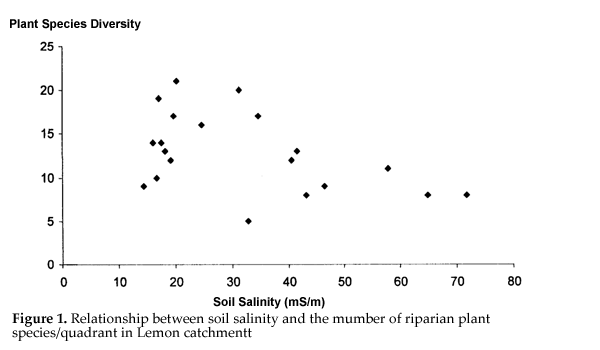Progress report on the grant:
Principal Researchers
Alan Lymbery, Fish Health Unit, School of Veterinary and Biomedical Sciences, Murdoch University
Neil Pettit, School of Aquatic and fisheries Sciences, University of Washington
Other Personnel
Michelle Ingram, PhD Student, Fish Health Unit, School of Veterinary and Biomedical Sciences, Murdoch University
Commencement Date 4 July 2005
Expected Completion Date 29 June 2007
Progress report July 2006
Field surveys in experimental catchments
Surveys were carried out in Ernies catchment (uncleared) and Lemon catchment (cleared) in November 2005 and March 2006. Dons catchment (partially cleared) could not be surveyed because of damage from a recent burn in the area. In each of the two surveyed catchments data were collected on soil salinity, soil structure, plant cover, plant species diversity, plant species composition, invertebrate density, invertebrate species diversity and invertebrate species composition.
Although the data are still being analysed, preliminary results indicate a clear difference between catchments in both soil salinity and biological diversity, with the cleared catchment having a greater soil salinity and a reduced diversity of both riparian plant species and vegetation-dwelling invertebrates (Table 1).
Table 1 Mean (standard error in parentheses) soil salinity, number of riparian plant species/quadrat and number of invertebrate species/quadrat in each catchment.
| Catchment | Soil salinity (mS/m) | Number of plant species/quadrat |
Number of invertebrate species/quadrat |
| Ernies | 27.7 (1.3) | 10.6 (0.8) | 21.3 (3.1) |
| Lemon | 54.9 (5.2) | 8.2 (0.9) | 13.3 (1.1) |
Detailed studies along a salinity gradient
Twenty permanent quadrats were established along a 6 km salinity gradient in Lemon catchment in March 2006. Within each quadrat, data were collected on soil conductivity, soil moisture content, soil organic matter, soil nitrogen, plant species diversity, plant species composition and biomass. In addition, individual plants were tagged for ongoing measurements of growth and seed set.
Although the data are still being analysed, preliminary results show a strong negative correlation between soil salinity and the diversity of riparian plants (Figure 1).

Initial analyses have identified a number of species of Hakea with contrasting responses to salinity. Seeds have been collected from these species to test the effects of salinity watering treatments on germination, growth and reproductive characteristics.
